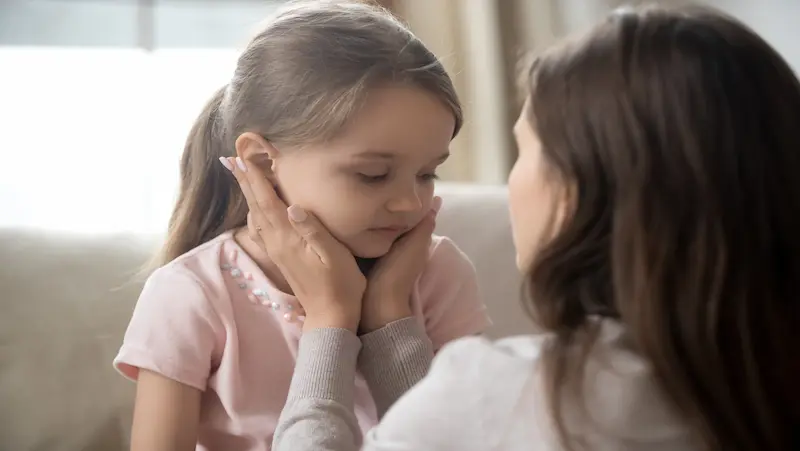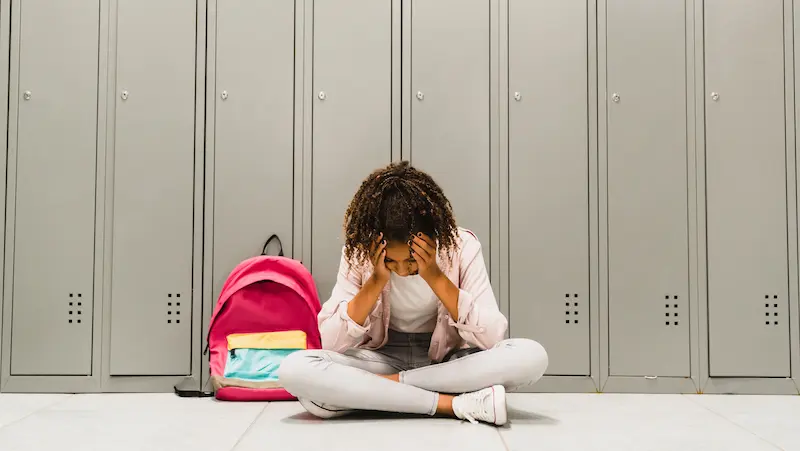In this modern age, where social interactions and influences have expanded exponentially due to technology and connectivity, the impact of peer pressure has taken on new dimensions. The desire to belong, to be accepted, and to fit in is a fundamental human instinct, especially during the formative years of adolescence. However, the quest for acceptance can sometimes lead our children’s down paths that don’t align with their authentic selves or our family values.
By exploring the dynamics of peer pressure together, you can help them understand that they are not alone in facing these challenges. As parents, you have the privilege and responsibility of being the foundational pillars of support for our children. It’s your duty to provide them with the tools, knowledge, and emotional strength they need to resist negative pressures and stand firm in their convictions.
In this article, we’ll delve into the intricacies of this often-challenging aspect of growing up and provide you with expert tips and strategies to help your child navigate the maze of influence that comes from their peers.
Table of contents
Definition of Peer Pressure

Peer pressure is a phenomenon that has persisted through changes in culture, society, and technology. It is a powerful force that results from our intrinsic need to connect and be a part of a community. Peer pressure, in its simplest form, is the effect that friends, acquaintances, or peers have over a person, causing them to adopt particular behaviors, attitudes, or choices. This influence, which can be overt or covert, direct or indirect, has a big impact on how a young person’s life develops.
Impact on children’s development
The impact of peer pressure on children carries significant weight, leaving lasting impressions on their development. Positive peer pressure has the potential to wield transformative influence. When surrounded by peers who encourage them to set and pursue goals, children are motivated to reach their potential, explore uncharted territories, and cultivate positive habits.
Peer pressure has substantial emotional and psychological impacts that span both of these domains. The decisions that kids make while being influenced by their classmates might affect how they perceive themselves and their place in the world. Positive peer pressure helps people develop confidence and self-assurance by reinforcing their belief that they can achieve great things with the help of friends who share their goals. Negative peer pressure, on the other hand, generates uncertainty and insecurity and promotes a culture where compliance trumps uniqueness.
Empower your children to stand strong against peer pressure by teaching positive affirmations for kids that reinforce their self-worth and encourage them to make choices aligned with their values.
Importance of parental guidance
Amid the complexities of peer pressure, the role of parental guidance emerges as a cornerstone of a child’s development. It’s important to recognize that shielding children from all forms of peer pressure isn’t the goal. Instead, your responsibility as parents is to provide them with the essential tools to navigate these influences with wisdom and integrity.
By fostering open communication, teaching critical thinking skills, and instilling a strong sense of self-worth, you empower your children to make decisions that resonate with their values and aspirations.
Teaching effective anger management for kids can equip them with the tools to handle peer pressure situations calmly and make thoughtful decisions without succumbing to negative influences..
Checkout anger management activities for kids.
Types of Peer Pressure

Certainly, peer pressure can take various forms when it comes to children. Here are some different ways peer pressure can manifest:
1. Direct Peer Pressure: This occurs when children are directly encouraged or convinced by their peers to take specific actions. For instance, friends might openly ask a child to skip a class or experiment with smoking.
2. Indirect Peer Pressure: Indirect peer pressure occurs when a child is impacted by watching the behaviors and choices of their peers. For instance, if a particular TV show is a topic of conversation among everyone, a child might feel the need to watch it in order to feel like they belong.
3. Positive Peer Pressure: Peer pressure isn’t always negative; positive peer pressure emerges when friends motivate each other to take part in productive and advantageous pursuits. For example, a child might receive encouragement from their friends to join a sports team or get involved in a community service initiative.
4. Negative Peer Pressure: Negative peer pressure pertains to the act of pushing or coercing someone to partake in actions that are detrimental, perilous, or unhealthy. This encompasses behaviors like drug use, participating in bullying, or engaging in other hazardous activities.
5. Active Peer Pressure: Active peer pressure encompasses direct efforts to shape another person’s conduct. This might involve tactics like convincing, motivating, or even using force to influence their actions.
6. Passive Peer Pressure: Passive peer pressure refers to situations where a child is influenced by merely observing the actions of their peers. They might adopt specific behaviors or attitudes because they aspire to emulate their friends.
Identifying signs your child might be facing peer pressure.
Recognizing and understanding the signs of peer pressure is a fundamental aspect of effective parenting, as it allows you to provide the necessary support and guidance to your child. Peer pressure is a pervasive force in the lives of children and teenagers, stemming from the innate human desire to belong and be accepted within a social group. When individuals, especially young ones, face pressure to conform to the behaviors, attitudes, and choices of their peers, it can have a significant impact on their development and well-being.
Teaching kids’ patience can empower them to resist peer pressure, as they learn to take the time to assess situations, consider consequences, and make choices that truly reflect their individuality and values.
Effective Communication Strategies
Building and maintaining an open parent-child relationship is a necessity when it comes to helping children navigate the intricate maze of peer pressure. By actively encouraging and fostering conversations centered around their friends, experiences, and challenges, parents create a safe haven where children feel comfortable sharing their concerns without the fear of judgement. This transparency serves as a vital bridge of understanding, allowing parents to gain valuable insights into their child’s world, and in turn, empowering them to provide targeted guidance and support.
Building an open Parent-Child relationship

Establishing an open parent-child relationship serves as a foundation for effectively addressing peer pressure. This involves creating an atmosphere of trust and non-judgment, where children feel comfortable sharing their thoughts, concerns, and experiences. Parents can achieve this by actively listening to their children, validating their emotions, and refraining from immediate judgment or criticism.
Engaging them in emotional regulation activities for kids can help them develop the resilience needed to manage peer pressure, allowing them to navigate social situations with confidence and make choices that reflect their true feelings and values.
Encouraging honest conversations about friends and experiences
Encouraging open conversations about friends and experiences allows parents to understand their child’s social dynamics. Showing genuine interest signals care for their well-being, paving the way for peer pressure discussions. Parents can ask about interactions, feelings, and instances of pressure, offering guidance and insights on decision-making while gaining valuable insights into their child’s world.
Equipping Your Child to Respond
Empowering children with confident, assertive responses to peer pressure is a proactive approach. This includes instilling the importance of setting personal boundaries, comprehending their values, and mastering the art of refusing compromising situations. Role-playing such scenarios in a secure setting enhances their self-assurance for real-life encounters. As children internalize these skills, parents equip them to resiliently navigate peer pressure, making choices harmonious with their values and goals.
Helping your child understand personal values
Personal values are the bedrock of our actions and behaviors. They shape who we are and how we interact with the world. Teaching our children about values like honesty, respect, empathy, and responsibility lays the groundwork for their character development.
Guiding them in making decisions aligned with values
As your child grows, they will face various decisions that will shape their path. Guiding them to make choices aligned with their values is a valuable skill. Encourage them to pause and reflect on their options, considering how each choice aligns with their beliefs. Ask questions that stimulate critical thinking, such as “How would each choice reflect who you are?” or “Which option resonates with your values the most?”
Choosing Positive Peer Influences
Peer influences have a big impact on a kid’s decisions and actions. You can mold your child’s environment in a way that upholds their ideals by assisting them in selecting positive peers. Encourage them to think carefully about who they hang out with and help them find friends who have similar beliefs. Talk about situations where they might feel compelled to compromise their ideas and assist them in coming up with polite defense strategies.
Dealing with Rejection and Bullying

During the process of maturing, youngsters inevitably face obstacles such as exclusion and harassment. As caregivers, our responsibility encompasses more than just safeguarding them from these hardships. You must also provide them with the emotional skills necessary to handle such adversities. Coping with rejection and bullying goes beyond mere survival; it entails nurturing resilience and personal development.
Offering emotional support during tough times
As a parent, your role in offering emotional support during challenging moments, especially when your child is facing peer pressure, cannot be overstated. Adolescence is a time when young individuals are more susceptible to the influence of their peers, often leading them to make decisions that might not align with their values or better judgment.
When your child feels understood and supported, they are more likely to turn to you for guidance when they face difficult choices. Sharing your own stories of navigating peer pressure or challenging situations from your past can help them see that they are not alone in their struggles.
Introducing techniques of stress management for kids equips them with invaluable skills to handle peer pressure situations, ensuring they approach challenges with a clear mind and the ability to make decisions aligned with their own well-being and goals.
Conclusion
In conclusion, as a parent, your active involvement in offering consistent emotional support while dealing with peer pressure is a cornerstone of your child’s emotional and psychological well-being. By fostering open communication, providing guidance without judgement, and instilling essential life skills, you empower your child to make choices that align with their values and aspirations.
Teaching kids about emotions equips them with the emotional intelligence needed to navigate pressure, helping them recognize their feelings, make informed decisions, and respond to peer pressure in ways that align with their authentic selves. Through your steadfast presence, you become a reliable anchor in their journey, helping them navigate the complexities of peer pressure with resilience and confidence.
To get your hands on more educational and free resources on coding for kids, robotics for kids, financial education for kids, etc., do check out the BrightCHAMPS Page now!
Also, BrightChamps provides a comprehensive platform for learning about money for kids, offering interactive and engaging resources that teach financial literacy, budgeting, saving, and other essential money management skills.
Frequently Asked Questions (FAQs)
A1. Initiate a conversation about peer pressure by creating a comfortable environment, asking open-ended questions, and sharing relatable personal experiences.
A2. Warning signs of negative peer pressure struggle might include sudden changes in behavior, withdrawal from family and hobbies, secretive behavior, or shifts in attitude towards school and values.
A3. Help your child build resilience against peer pressure by teaching decision-making skills, fostering self-confidence, and encouraging them to assertively communicate their boundaries.
A4. Positive peer pressure can positively impact your child’s development by motivating them towards healthy behaviors, fostering teamwork skills, and exposing them to diverse perspectives.
A5. If your child becomes isolated due to peer pressure conflicts, provide a non-judgmental space to talk, offer guidance on seeking supportive friendships, and consider involving a school counselor or therapist if needed.


 We are an army of educators and passionate learners from BrightChamps family, committed to providing free learning resources to kids, parents & students.
We are an army of educators and passionate learners from BrightChamps family, committed to providing free learning resources to kids, parents & students.







